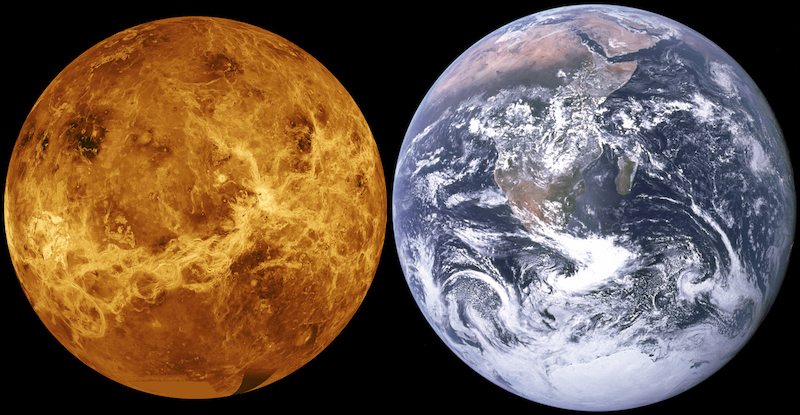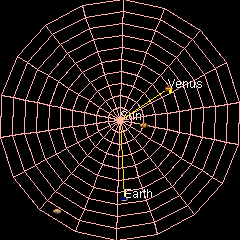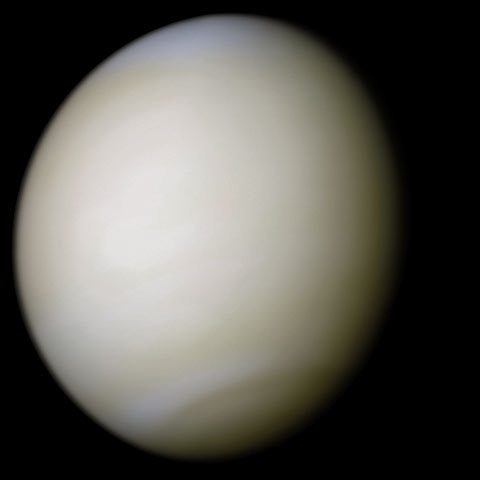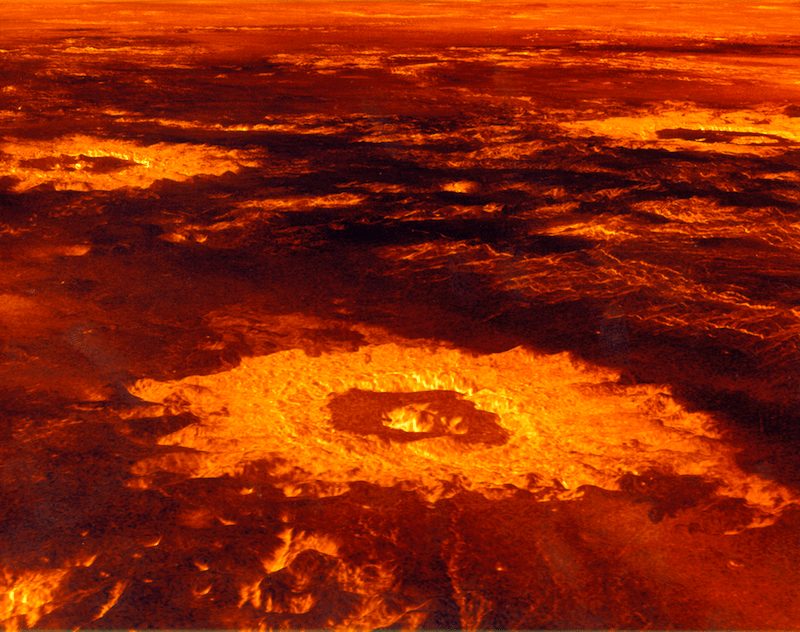Venus
Episode #2 of the course Introduction to the Solar System
Venus is the brightest planet in the sky, the second planet from the Sun, and (at times, depending on its orbit) the closest neighboring planet to Earth at an average of 25 million miles away (40,233,600 km). Venus is also the closest planet in diameter when compared to Earth. It is unique in that it orbits the Sun at roughly a distance of 67 million miles (108 million km), and unlike other planets, it orbits in a nearly perfect circle. It is also the only planet that rotates clockwise (in a retrograde rotation) and rotates slower than any other planet, completing a rotation once every 243 Earth days. That means that a day on Venus is a little longer than a year (224.7 Earth days) on Venus.

Size comparison of Venus and Earth

Animation of Venus’ and Earth’s revolution around the Sun
Though the name Venus comes from the Roman goddess of love and beauty, the planet itself takes on a very different persona and is sometimes referred to as the deadliest planet in our solar system. Visually, Venus appears to be a gorgeous planet with sweeping clouds and softly blended colors.

A real-colour image of Venus taken by Mariner 10 processed from two filters. The surface is obscured by thick sulfuric acid clouds
However, dip beneath the cloud cover and the true, hostile nature of the planet becomes impossible to ignore:
– Atmosphere: Approximately 50 miles (80 km) above the surface sits a thick cloud of vaporized, concentrated sulfuric acid, which has the corrosive power to literally burn through steel.
– Temperature: Because Venus’ atmosphere is nearly all made up of carbon dioxide, the Sun’s light easily penetrates it, but heat is trapped inside (known as the greenhouse effect). Surface temperatures reach over 900 degrees Fahrenheit (482 degrees Celsius).
– Terrain: The landscape of this terrestrial planet is dominated by dormant volcanoes, some of which are so big that they extend nearly 3 miles (4.8 km) into the atmosphere. Slicing between these volcanoes are deep ravines forged by rivers of molten lava that cut across the surface of Venus, some extending farther than even the Nile River.
– Pressure: Probe sensors reveal an atmospheric pressure that is 90 times greater than on earth—pressure that is strong enough to crush a car.
Venus also has a particularly violent history. Massive volcanoes located across the surface of the planet have blasted billions of tons of sulfur into the atmosphere throughout its history.

Impact craters on the surface of Venus (false-colour image reconstructed from radar data)
Speaking of history, Italian astronomer Galileo Galilei studied Venus through the lens of his telescope and discovered that it had phases, just like Earth’s moon. This discovery served as evidence that Venus (and other planets) orbited the Sun rather than the Earth (disproving the Ptolemaic model of the solar system). Venus is brightest in the night sky when it is a thin, crescent shape. At this point in its phases, it is actually the brightest object at night (after the moon) and is frequently misreported as a UFO.
Recommended book
“Wonders of the Solar System” by Brian Cox, Andrew Cohen
Share with friends

